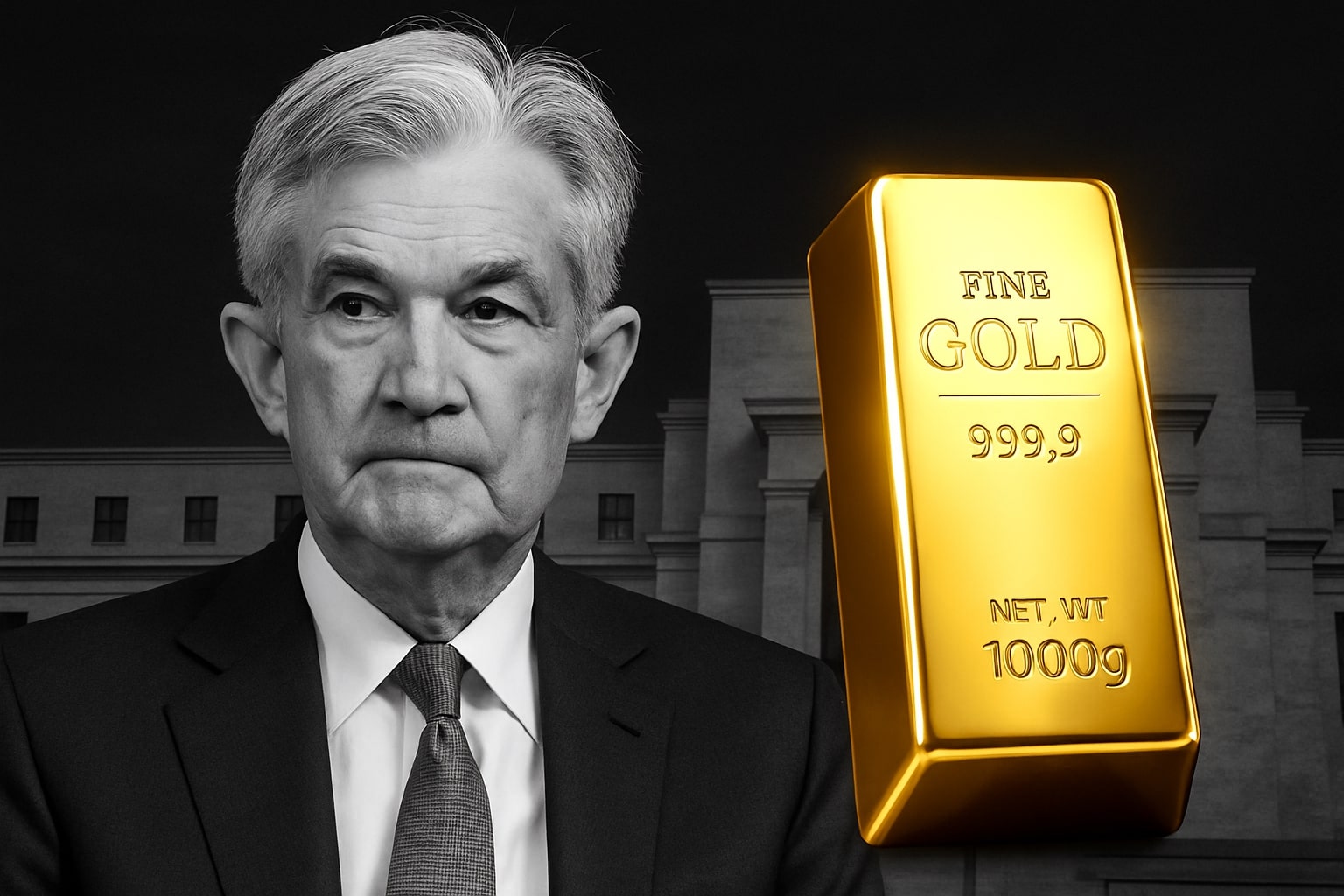
Oil Price Forecast: WTI Falls to $59.30 as Urals Collapses to $36.61 and Brent Stalls at $63.92
With Urals crashing, Brent capped below $65, and WTI losing $60, the oil market braces for a sanctions-driven supply shakeup as discounts widen, buyers exit, and floating storage surges | That's TradingNEWS
Oil Price Forecast As WTI CL=F Slips To $59.30 And Brent BZ=F Holds $63.92 While Russian Urals Collapses To $36.61 And Sanctions Trigger A Global Repricing Storm
The crude market opens the week under heavy pressure, with WTI CL=F trading at $59.30, extending its decline from Friday’s $59.77 close, and Brent BZ=F holding near $63.92 in a fragile pause that hides a deeper structural shock. The entire energy complex is being reshaped by the violent crash in Russia’s Urals grade, which collapsed to $36.61 per barrel at Novorossiysk, its lowest in almost three years. That price collapse is pulling the entire global curve downward as the November 21 sanctions deadline for Rosneft and Lukoil shuts Russia’s main export arteries and forces tens of millions of barrels into distressed circulation. The widening discount between Urals and Brent — now $23.52, nearly double the typical $12–$13 spread — sends an unmistakable message that Russia has entered a forced-seller phase that will ripple through WTI and Brent pricing for weeks.
WTI CL=F Feels The Weight Of A Supply Shock As Russia’s Collapse Forces A Market-Wide Reset
The weakness in WTI CL=F at $59.30 reflects more than a simple selloff. It captures the downstream impact of Russia losing access to its two largest buyers. India’s major refiners, which previously imported close to 1 million barrels per day from Russia, halted December cargoes rather than risk secondary sanctions. China’s Sinopec and PetroChina joined the retreat, cutting nearly 45% of Russian shipments into China. The sudden evaporation of Asian demand leaves Russia rerouting barrels into secondary markets at extreme discounts. JPMorgan estimates that nearly 1.4 million barrels per day of Russian crude is now sitting in floating storage, a massive supply overhang that exerts downward pressure on every global benchmark. When discounted barrels flood the shadow market, demand for U.S. WTI-linked crude tightens, and price ceilings become hard to break.
Brent BZ=F Stability Near $63.92 Masks A Hidden Oversupply Threat As Key Buyers Shift Away From Russian Barrels
Brent trading around $63.92 appears stable, but the calm is deceptive. The combination of sanctions, collapsing Russian exports, and a looming 2026 oversupply flagged by the IEA creates a fragile equilibrium. When India and China — together representing more than 40% of Russia’s redirected export strategy after the EU embargo — suddenly step back, Brent-linked suppliers fill the gap but face a swelling global inventory backdrop. The OPEC Basket at $64.68 sits above Brent but is now drifting, signalling that producers are entering a region where fiscal balances tighten. With rising inventories, collapsing Urals pricing, and China and India’s rapid pivot toward Middle Eastern blends, Brent’s stability risks snapping if OPEC+ holds output steady while discounted Russian barrels circulate unchecked.
Urals’ Fall To $36.61 Becomes The Core Catalyst Dragging WTI CL=F And Brent BZ=F Into A Bearish Compression Cycle
The collapse of Urals crude to $36.61 marks the single most consequential pricing event of this cycle. This is not a normal discount; it represents a multi-year low occurring at the exact moment sanctions remove Rosneft and Lukoil from global transaction networks. Discounts widened to $23.52 relative to Brent, nearing the extreme $40 gap seen during the initial invasion sanctions. That breakdown directly weakens WTI and Brent because refiners adjust cost structures when one major supplier collapses into distressed selling. The structural damage is already visible: Russia’s October oil revenues dropped 27%, the ruble strengthened, and seaborne exports fell sharply in early November — the largest weekly decline since January 2024. When a major exporter loses buyers, the global price floor follows downward.
Technical Structure Shows WTI CL=F Pressured Below $60 As Inventories Rise And Gasoline Weakness Caps Upside
The technical setup intensifies the bearish tone. WTI CL=F slipping under the $60.00 level is historically significant. When WTI loses the $60 threshold during supply-heavy cycles, price often accelerates into deeper declines as sellers gain control of momentum. Gasoline at $1.992 reflects weaker refined product demand, preventing any meaningful rebound in crude. Brent’s inability to reclaim and hold above $65 confirms a market struggling under heavy inventories and macro caution. Volatility is quietly rising again, mirroring previous rollover phases where crude lost multiple dollars in successive sessions without sharp rebounds. This structure is classic pre-glut behavior.
Global Flows Reshuffle As Middle Eastern Blends And U.S. Exports Absorb The Demand Vacuum Left By Russia
As India and China retreat from Russian barrels, Middle Eastern exporters fill the vacuum. Saudi and UAE shipments to Asia accelerate while U.S. exporters attempt to gain market share — but only where freight economics allows WTI-linked crude to compete. The shift puts WTI at a disadvantage because discounted Urals continues to leak into gray-market destinations where sanctions enforcement is weaker. This creates indirect price pressure even if official purchases decline. The supply chain reconfiguration builds a bearish framework for WTI and keeps Brent capped as refiners seek consistency over distressed cargo risk.
Geopolitical Tension Adds Another Layer Of Volatility As Drone Strikes Hit Export Infrastructure And Raise Transport Risk
The drone strike on a Turkish-flagged LPG tanker at a Ukrainian port adds to regional instability. Additional Ukrainian drone attacks damaging Russian refining and port installations — including Novorossiysk and Samara — constrain Russia’s export capability and force more barrels into floating storage. Romania’s evacuation of border communities after separate strikes underscores the risk premium now embedded across Black Sea shipping lanes. These disruptions typically push prices higher, yet the market’s muted reaction proves that oversupply concerns are overpowering geopolitical risk, a signal that the bearish fundamentals dominate the current cycle.
Macro Pressure Builds As OPEC+ Holds Output Steady While Oversupply Risks For 2026 Grow And U.S. Inventories Climb
The IEA’s latest adjustment signaling a softer 2026 demand outlook deepens the pressure on OPEC+. Holding output steady while inventories rise sets the stage for prolonged weakness. WTI at $59.30 and Brent at $63.92 reflect this imbalance. Until OPEC+ signals a coordinated cut, the market remains vulnerable. U.S. storage builds, weaker distillate drawdowns, and softening demand reinforce the idea that crude faces a medium-term supply-heavy environment, especially with Russia’s distressed barrels adding unplanned volume to global circulation.
Read More
-
JPIE ETF Holds $46.24 ETF Gains Traction With 5.7% Yield And Low Volatility
17.11.2025 · TradingNEWS ArchiveStocks
-
XRP ETF, XRPI And XRPR ETFs Spark Institutional Wave As XRP-USD Holds $2.15 With $58M Volume
17.11.2025 · TradingNEWS ArchiveCrypto
-
Natural Gas Price Forecast - NG=F Falls to $4.35 as Record Output, Warm Weather and Storage Surplus Pressure Bulls
17.11.2025 · TradingNEWS ArchiveCommodities
-
USD/JPY Price Forecast - Yen Climbs Toward $155.65 as Japan’s Weak GDP Fuel Dollar Strength
17.11.2025 · TradingNEWS ArchiveForex
Final Oil Price Forecast Verdict: WTI CL=F And Brent BZ=F Maintain A Strong Bearish Bias Until Key Resistance Levels Break
WTI and Brent remain structurally bearish. The collapse of Urals to $36.61, the widening discount to $23.52, the 27% collapse in Russia’s revenues, the floating storage surge to 1.4 million barrels per day, the drop in WTI to $59.30, and the failure of Brent to push past $65 all show a market leaning decisively lower.
Oil Price Forecast Verdict: SELL
WTI CL=F stays bearish until a decisive breakout above $60.50–$62.00.
Brent BZ=F stays bearish unless it reclaims $65.50–$67.00 with strong volume.



















